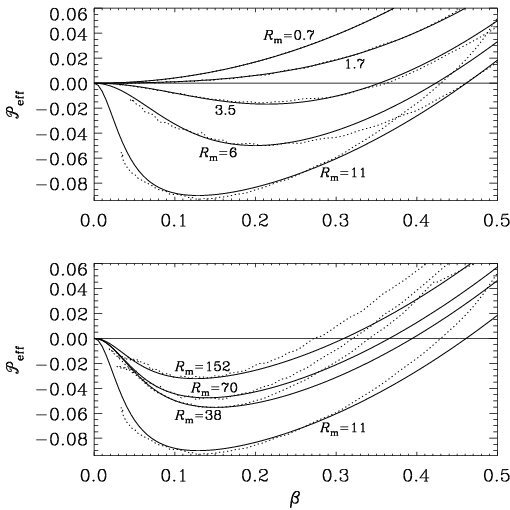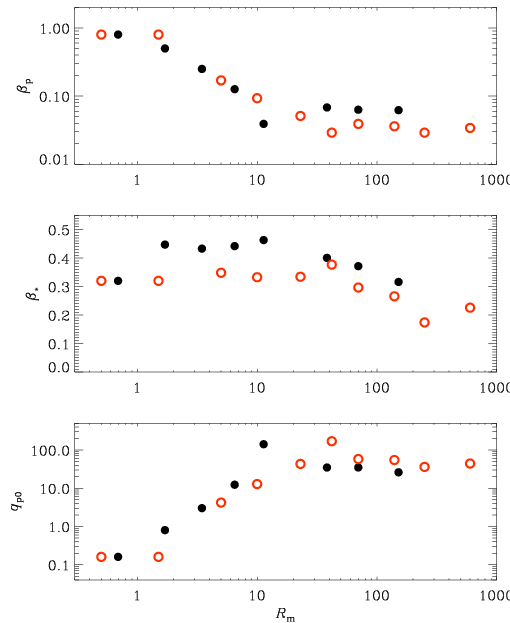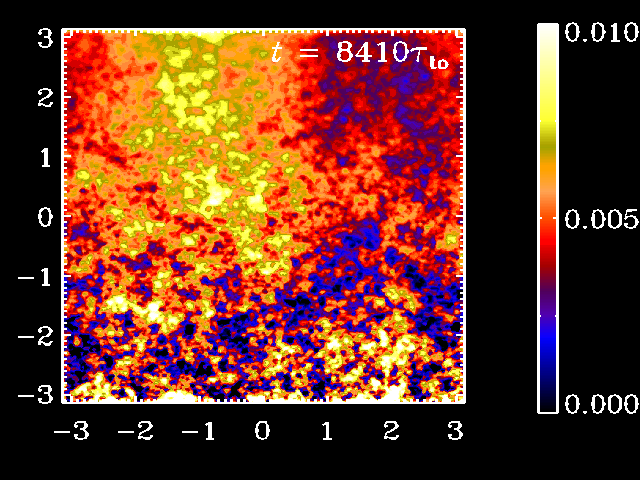Background.
It is generally accepted that the solar dynamo operates
in the shear layer beneath the convection zone.
This idea faces several difficulties that might be avoided
in
distributed solar dynamos shaped by near-surface shear.
In that scenario, active regions would form due to large-scale
(mean-field) instabilities in the near-surface shear layer.
One candidate has been the negative effective magnetic pressure instability
(NEMPI).
Until recently, this possibility remained uncertain, because it was based
on results from mean-field calculations using turbulent transport coefficients
determined from direct numerical simulations (DNS).
A breakthrough has now been achieved through the direct
detection of this instability in simulations.


NEMPI has now been verified for magnetic Reynolds numbers between 1 and 70.
(These Reynolds numbers are based on the wavenumber of the energy-carrying
eddies, which are small compared to the domain.
Reynolds numbers based on the scale of the full domain are about 100 times
bigger and range from 100 to 7000.)
For magnetic Reynolds numbers below 1, NEMPI no longer exists.
This is significant, because it explains why it has not been seen
in earlier work based on quasilinear theory.
Below is an example of the effective magnetic pressure as a function
of the mean magnetic field, showing a minimum for field strengths
below about half the equipartition value.

Demonstration that ½(1-qp)B2 is
negative even for a range of ReM values above ∼1.7
(for which there is still no minimum) and below ∼3.5 (for which there is).
To be able to say something about larger values of ReM,
we have to reduce the scale separation ratio.
In the figure below, we show the ReM of three fit
parameters βp, β*, and qp0.
These parameters characterize the shape of the Peff curve
(solid lines above) and fit the numerics well for weak fields (dotted lines).

Convergence of fit parameters βp, β*, and
qp0.

ReM=74 with 2563 meshpoints
[animation].

Repetitive structures in a box that is 8 times wider,
with just y averaging (upper panel)
and with yt averaging (lower panel).
ReM=36.